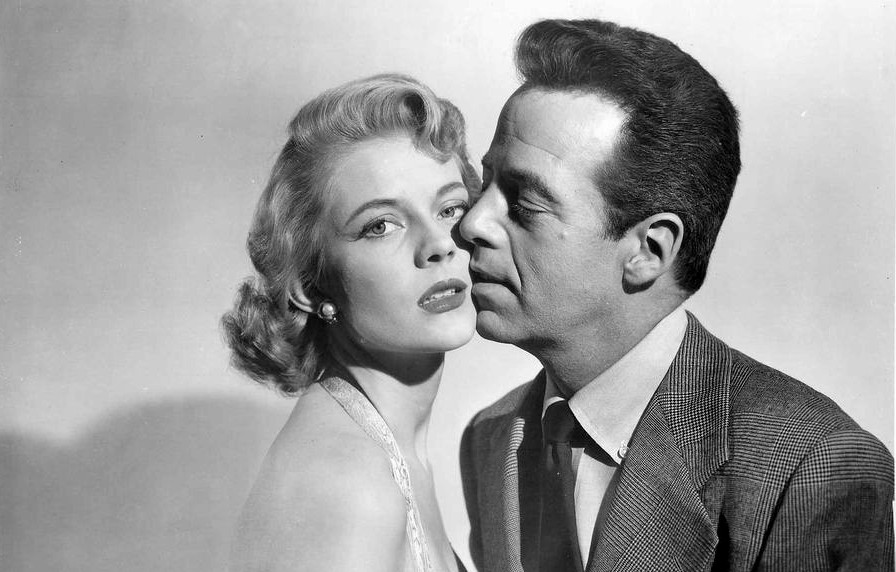
Five American bar patrons who oppose the universal draft experience what a nuclear-fuelled invasion by the Soviet Union would entail. If one film should exemplify the hysterical red scare of the fifties, it is this low-budget propaganda piece from 1952. 2/10
Invasion, U.S.A. 1952, USA. Directed by Alfred E. Green. Written by Robert Smith & Franz Shulz. Starring: Gerald Mohr, Peggie Castle, Dan O’Herlihy, Robert Bice, Tom Kennedy, Wade Crosby, Phyllis Coates, William Schallert. Produced by Robert Smith & Albert Zugsmith. IMDb: 3.2/10. Rotten Tomatoes: N/A. Metacritic: N/A.

One of the multiple propaganda films produced by Hollywood in the fifties, Invasion, U.S.A. is generally considered to be one of the worst, although it does have its defenders. Produced by Poverty Row studio American Pictures International and distributed by Columbia, the movie was directed by veteran B director Alfred E. Green, who had been around since early silent cinema, and is perhaps best known for directing The Jackie Robinson Story (1950), the biopic of the first black baseball star of America. Invasion, U.S.A. was written by Robert Smith, who also worked on the writing team for The Beast from 20,000 Fathoms (1953, review), which gave him a Retro Hugo Award nomination.
Five libertarians who oppose the universal draft walk into a bar. Seriously! This is how the film begins! Five libertarians who oppose the universal draft walk into a bar, and are asked by a reporter (Gerald Mohr) how they view the idea of a universal draft. A sinister brooding ”forecaster” called Mr. Ohman (Dan O’Herlihy) scalds them for wanting peace and stability but aren’t prepared to pay the price. He then swirls his glass of cognac and leaves the five (including leading lady Peggie Castle) in a strange, almost trance-like state. Then the man on the TV (Knox Manning) informs them that ”the enemy” has began a full-scale invasion of USA.
The film then follows the five bar guests – also including a congressman (Wade Crosby) who opposes the draft and taxes, and a tractor manufacturer who has refused to build tanks for the army (Robert Bice) – and the bartender who has always dodged the draft (Tom Kennedy), through the horrors of war, where most of them meet horrible deaths and other calamities. Slowly they realise that by clinging to their personal freedoms and comforts, they have let their country and their army down and all but invited the communists to bomb the shit out of their country with atom bombs. The movie ends with a not entirely unanticipated twist, intended to encourage viewers to do their bit for national security before it is too late.
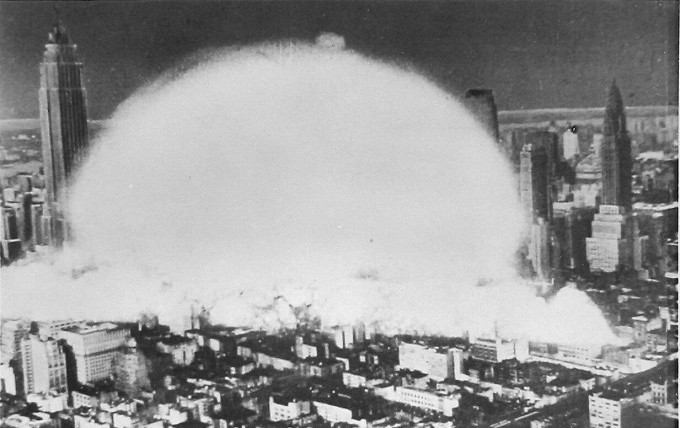
About half of the film is taken up by stock footage of WWII and military training videos. This creates a noisy, disjointed film where most of the time you don’t follow any of the protagonists but rather faceless soldiers, airplanes, paratroopers, and explosions. Most of the “enemy” soldiers carry US uniforms – the film explains this by way of confusion tactics, but of course the real reason is that this way stock footage of US soldiers can be used to represent an invading army. The communists are portrayed as alcoholic, mindless, brutish rapists and all speak with a wide variety of faux accents, ranging from vaguely Slavic to vaguely Teutonic to Hispanic or Asian. The conversations of the communists seem ripped straight from a Mel Brooks movie. The conversation of the protagonists fares no better.
The effects are not too bad – the physical ones are gory for their time, there’s a few obvious dummies involved as well, and the visual ones are about as good as they get in a low-budget production in the fifties. The man behind the visual effects is sci-fi cult legend Jack Rabin, who had cut his teeth on films like Rocketship X-M (1951, review) and Flight to Mars (1951, review) – see the reviews for the latter for more on Rabin. Veteran W. Donn Hayes is listed as ”supervising editor”, and one could imagine that Rabin helped out with the cross-fades, overlays and the rapid editing of the stock footage, creating a visually energetic, albeit incohesive and ultimately pointless barrage of war and destruction. The cinematography is handled by John L. Russell, the cinematographer responsible for the iconic work in Alfred Hitchcock’s Psycho, that one film that he created an entire legacy on. Hitchcock called him the greatest cinematographer in the world, although basically all the rest of his catalogue consists of B movies, including Rocketship X-M, The Beast from 20,000 Fathoms (1953, review), Tobor the Great (1954, review), The Atomic Kid (1954, review) and Indestructible Man (1956, review).

Most of the people involved are rock-solid professionals, many of them even acclaimed in their fields. In addition to those mentioned above, we can add Oscar-nominated art director James W. Sullivan, Oscar-nominated set decorator John Sturtevant and B-sci-fi composer extraordinaire, Albert Glasser. Sullivan and Sturtevant don’t do anything particularly wrong, it’s just that they don’t really have much to work with. Glasser’s music is effective, but constantly drowned out by the noise of machine guns, airplanes and bombs.
So, clearly a lack of talent was not an issue with this movie. If that lack resided anywhere, then it was with the scriptwriters Robert Smith and Franz Schulz, and perhaps with the lack of interest from director Green. The science and geography are all garbled. As when the commies land ”on the shores of Washington D.C.”. Or the fact that the newscaster says that ”thousands of A-bombs” have been dropped on the States, in preparations for an invasion. If thousands of nuclear weapons had been dropped on USA, there would be nothing left to invade, disregarding the fact that all invaders would likely drop dead like flies in a few years from radiation sickness. As Robert Hood puts it: “Most interesting to me is the apparent lack of awareness of how, exactly, nuclear weapons work. […] There are so many A-Bombs tossed around that very little should be left of the US, Russia or indeed the world.” There is a point to be made that nuclear weapons weren’t quite as radioactive as pop culture would sometimes have us believe, either, making films like Captive Women (1952, review), depicting a wasteland formed by a nuclear winter even 1,000 years after a nuclear war, the other extreme of the spectrum. But still, “thousands of A-bombs” would certainly make a little bit more of an impact than just destroying a few buildings and infrastructure, and certainly wouldn’t be the weapon of choice for carpet bombing by an army actually intending to inhabit the bombed areas.
And then of course there is the hilarious paradox that the movie encourages Americans to fight communism by sacrificing their comforts, freedom and assets to the state. Basically turning America into a socialist country so that it can fight socialism. If anything, this shows how feeble a grasp many Americans in the fifties had about what socialism actually was/is.

Although the film is a low-budget effort, it still had a budget of 127 000 dollars, which is a little under one million dollars today, with project-adjusted inflation. Not a big budget by any means, but still substantial for a Poverty Row exploitation movie. Considering about 70 percent of the film is either stock footage or five persons talking in a bar, one wonders where all that money went. In fact the acting is ok, the direction and filming are quite alright, and the effects aren’t bad either. The story might have even held up, had someone taken the time to actually develop it.
Historically one can draw some interesting parallels, nay, actual lineage, from the late 18th century, and the hugely popular “future war” genre. While there are scattered precedents, the genre is generally thought to have been popularised through British George Tomkyn Chesney’s 1871 novella The Battle of Dorking. Like Invasion, U.S.A., The Battle of Dorking makes the point that, in this case the Britain, has become too complacent regarding the threat of invasion, trusting too much in its inherent greatness to imagine that anyone would dare attempt an attack. Hundreds of books in the future war genre were published during the last three decades of the 19th century, culminating, one could say, in George Griffith’s double-whammy Magnum Opus The Angel of the Revolution and Olga Romanoff, in 1892 and 1893. Most often, as in the case of The Battle of Dorking, it was the Prussians/Germans, who were the invading force. Prussia was expanding quickly withing the German territories, and the swift victory over France in the Franco-Prussian war in 1870, as well as the proclamation of the German Empire in 1871, rattled many Europeans, not least the British, who already felt threatened from the South by France and now also from the East by the German Empire. At the same time, Britain’s military forces were spread around the globe, upholding colonies and the Commonwealth. The Germans, on their side, were busy building a new modern war fleet, as well as developing an airship, as Count Ferdinand von Zeppelin laid out his plans for his dirigible in 1874. There were many in the British aristocracy who believed Britain laid too much importance on the colonies and that the government spent way too little time and money building up the British Isles’ own defenses. Many of the future war stories followed lone mavericks trying to convince the establishment of spending more on domestic security, and proven right in their fears by a surprise attack immobilising the British fleet with new war machines and super-weapons. Future war stories were also written elsewhere, in particular in France, but they were exceptionally popular in Britain.

Basically, Invasion U.S.A. is a 19th century future war novel transplanted to USA in the 1950’s. After the defeat of Nazi Germany, the new enemy on the rise was the Soviet Union. During WWII, the Red Army had shown its awesome power. While Washington officially took much of the credit for defeating Hitler, those in the know were aware that it was the Russians that had paved the way for D-Day. Not only did the USSR have the numerically largest army in the world — at August 29, 1949, “Pervaya molniya”, or First Lightning, the first Soviet nuclear test, sent shockwaves around the world. Many both in and outside the US government and military saw an urgent need to step up the production of nuclear weapons as well as military spending, and implement a universal conscription in the same way as the Russians. At the same time, US authorities and politicians, under the burning zeal of Sen. McCarthy, recognised the appeal the communist and socialist ideals had on many Americans, and engaged in a massive anti-communist campaign on home soil — and Hollywood had a key position in this campaign. Invasion, U.S.A. brought together the propaganda for anti-communism and the nuclear arms race in one package, and like the British precursors, it scalded those politicians and members of the public who were not willing to sacrifice time, money and effort to keep the borders of the US safe from invasion.
While there were critics who recognised the film for a cheap and disjointed exploitation film, Invasion, U.S.A. received good write-ups in the trade press. Variety called it “imaginative”, “startling”, and praised the “effective use of war footage”. Hollywood Reporter also commended the “excellent utilization of stock footage”, and called the movie “tremendously exciting”. And apparently audiences liked the film as well, as producer Albert Zugsmith, with his company American Pictures Corporation, hoisted in over one million dollars in ticket sales.
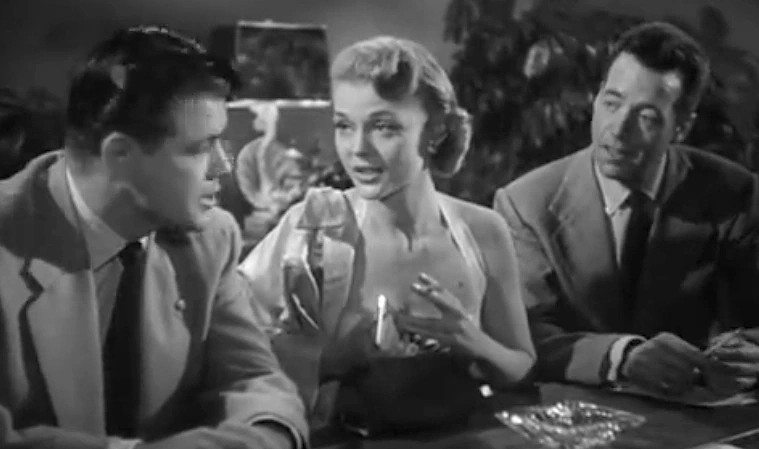
Invasion, U.S.A. was a staple on US TV in the sixties, before disappearing from the small screen almost completely. It made a resurgence in 1994, when it fell prey to the infamous movie roasting TV show Mystery Science Theater 3000, known as MST3K to its fans. It has since had a 1998 VHS release, a 2002 DVD release and a 2009 special edition DVD release. The movie has no Rotten Tomatoes consensus, but a mere 8/100 audience approval, and a 3.2/10 rating on IMDb. TV Guide gives it 2/5 stars, writing: “The film is full of propaganda, stock footage, and overacting, but it still offers a provocative message”. AllMovie gives it 1.5/5 stars, with Craig Butler writing: “Invasion USA may still have some appeal for audience members with an unquenchable thirst for all things anti-Communist, but even diehards may flinch at the heavyhandedness that permeates Invasion. Written with a sledgehammer rather than a typewriter, Invasion’s screenplay hammers home its point relentlessly, and if it feels that someone in the audience may perhaps have missed a point, it is happy to repeat it again and again. Invasion also may set a new record for the amount of stock footage used in one film.” And in his book Keep Watching the Skies, film historian Bill Warren calls the movie “shoddy”, “corrupt” and “paranoid”: “It’s a film that could have been made by Senator Joe McCarthy himself.” Warren continues: “Invasion USA is a very bad, but also very evocative picture”.
Modern online critics almost all agree that Invasion, U.S.A. is a preposterous and cheap-looking film, but some get a lot more mileage out of it than others. At-A-Glance Film Reviews gives it a 1/5, calling it “incompetent at every level”. Robert Hood at Hood Reviews writes: “The movie is a primitive affair, though not without some propagandist effectiveness, I suppose. […] It is only of interest as a socio-historical document.” Richard Scheib at Moria likewise gives the movie 1/5 stars. Scheib writes: “While Invasion USA has been designed to make a political point, it is heavy-handed and inert as a story”; “During the climactic moments, the film contrives several scenes designed to get the red-blooded patriotic male all stirred up and angry. […] You get the impression that the film feels if it cannot make it points by political tub-beating then it will appeal to the basest common denominator and get the patriotic American male all worked up by the thought of lecherous Commies putting their paws on virtuous American heroines.” Mark Cole at Rivets on the Poster calls Invasion, U.S.A. “a massive collection of unrelated stock footage with a minimal story wrapped around it all”. However, Cole admits: “I’ll confess I have a certain amount of affection for this silly thing, and a certain admiration for how well they turned a trip to the stock footage vault into a feature film”.
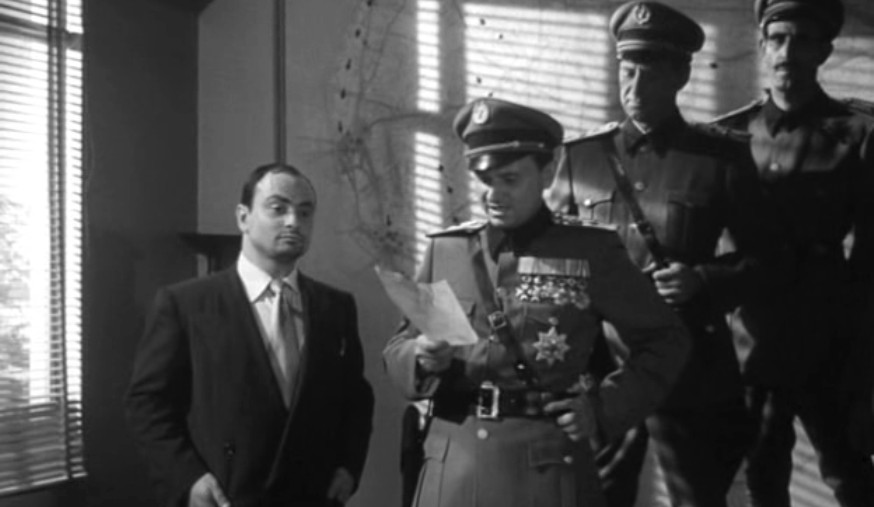
But there are others, as well, that hold the film in certain regard. Rich Rosell at Digitally Obsessed gives Invasion, U.S.A. the equivalent of a 7/10 rating, as does Glenn Erickson at DVD Savant. According to Rosell, the film “stands as one of the finer examples of anti-Soviet B-movie preaching ever produced by Hollywood. Looking at it today, it is both campy and disturbing, with the modern day parallels (the bombed out skyscrapers in New York) looking eerily familiar.” Erickson almost gives it a glowing review: “Cheap, clever, outrageous, but attention-grabbing in the extreme, Invasion, USA is the key cold war ‘scare’ picture”. He calls the plot “neatly structured”, Dan Herlihy’s performance a “touch of genius” and praises the film’s “mounting feeling of hysteria”. Sure, Erickson writes, the film is preposterous, hokey, silly, but it works by being so outrageous that the audience doesn’t have time to collect their thoughts. Erickson concludes: “Invasion, USA is […] one of the weirdest political films ever made, with propaganda that cannot be separated from entertainment content. The only Cold War anti-communist film that can top it for absurdity, is the inexplicable Red Planet Mars.” (See our review of that movie here.)
In a review that I wrote some five years ago I was really angry at Invasion, U.S.A. for being so bad, and I found it hard to find any redeeming features in it. I have never been a fan of propaganda films, especially those that play fast and loose with facts and treat audiences like idiots. It is still a movie that makes my stomach turn because of its racism and stereotyping, as well as its jingoist war-mongering. However, I must also admit that many of the reasons it makes me want to throw stuff at my screen are also probably the reasons it became so popular: despite its crudeness, silliness and preposterousness, it is a cleverly crafted piece of propaganda exploitation. But make no mistake: it is still a bad movie. My main beef with Invasion, U.S.A. is probably that I find it extremely boring for long stretches, when it bombards me with one stock sequence after the other, only to return to a live-action piece that’s static, badly written, stiffly directed and tries to hammer home a point that it’s made thirty minutes ago and will keep making for the next thirty minutes.
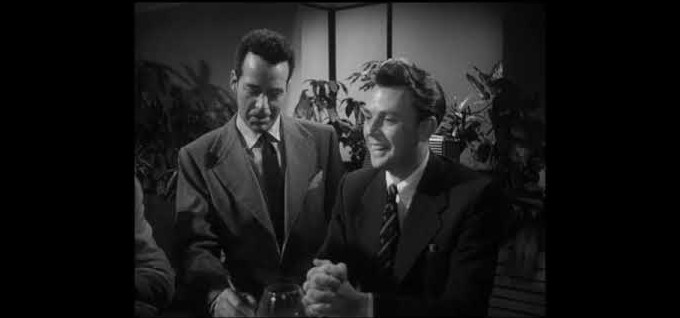
The acting, even though uneven, isn’t a problem. Gerald Mohr as newsman Vince Potter is a good actor, and something of a legend for Old Time Radio fans, as he was a frequent leading man in radio shows in the forties and early fifties. He is perhaps best known for being the voice of Ray Chandler’s private eye Philip Marlowe in over 100 episodes between 1948 and 1951. Incidentally, Mohr also looked quite a bit like Marlowe’s most famous screen impersonator, Humphrey Bogart. At the cinema, Mohr had a decent career as leading man in B movies or second or third man in a few A films. Mohr had the lead in the strangely appealing Ib Melchior movie The Angry Red Planet (1958) and voiced Mr. Fantastic in the 1967-68 animated series Fantastic 4.
Peggie Castle is bland in the movie, but also had a nice career as a B movie leading actress and in TV. One of the many Hollywood starlets pegged for the movies more for their looks than for their talents, Castle did have a background in stage and radio work from her youth, and managed to keep working steady in decent roles for over a decade between 1950 and 1962, which was when she retired from acting, at just 35 years of age. Unfortunately she developed an alcohol addiction and passed away from cirrhosis in 1973. Her only other SF entry is Beginning of the End (1957), in which she and Peter Graves battle giant grasshoppers.
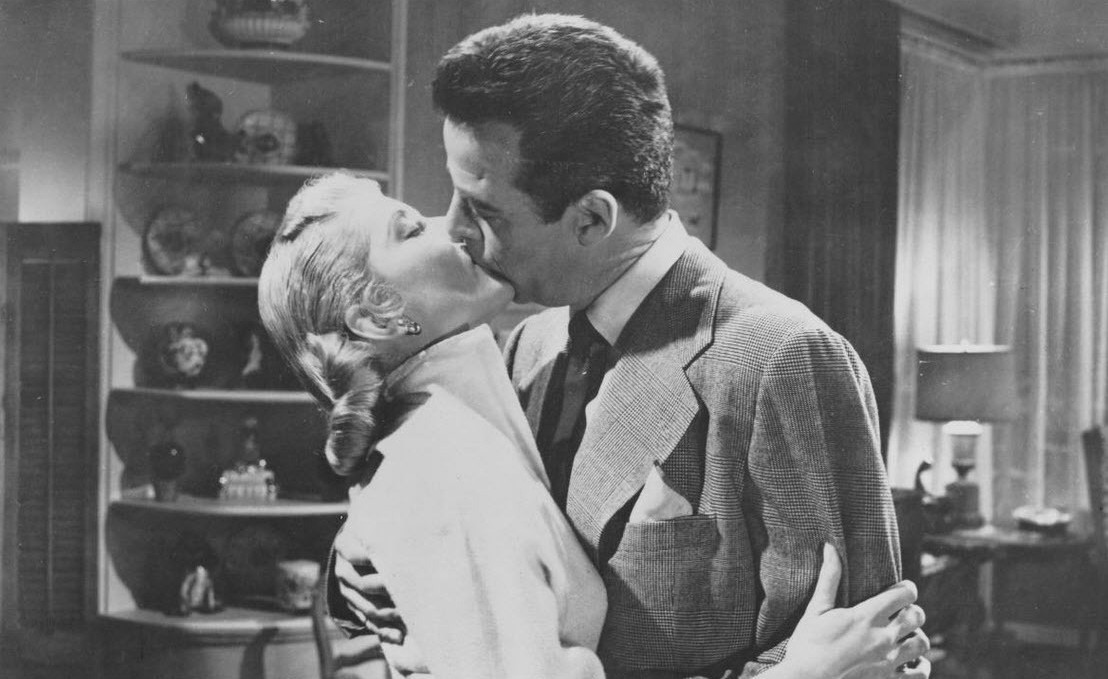
The tractor manufacturer is played by prolific character actor, stocky Robert Bice, one of his many substantial, if not always memorable, supporting parts. Bice was a western staple who had better luck on TV than on the big screen. He is also of some SF interest. He had a small role as an Eskimo chief in Red Snow, and a larger one in the afore-mentioned Captive Women, as the nominal main character’s sidekick. He had smaller roles in Port Sinister (1953, review), The Snow Creature (1954, review) and Space Master X-7 (1958), and yet a substantial role in the cult classic It! The Terror from Beyond Space (1958), as Major John Purdue aboard a space ship invaded by an alien. Bice plays the character who crawls down an airduct in one of the film’s most memorable scenes — one which would come to inspire Alien (1979) and a number of other movies. Bice often also worked as dialogue director on the low-budget films he appeared in, and Invasion, U.S.A. is no exception.
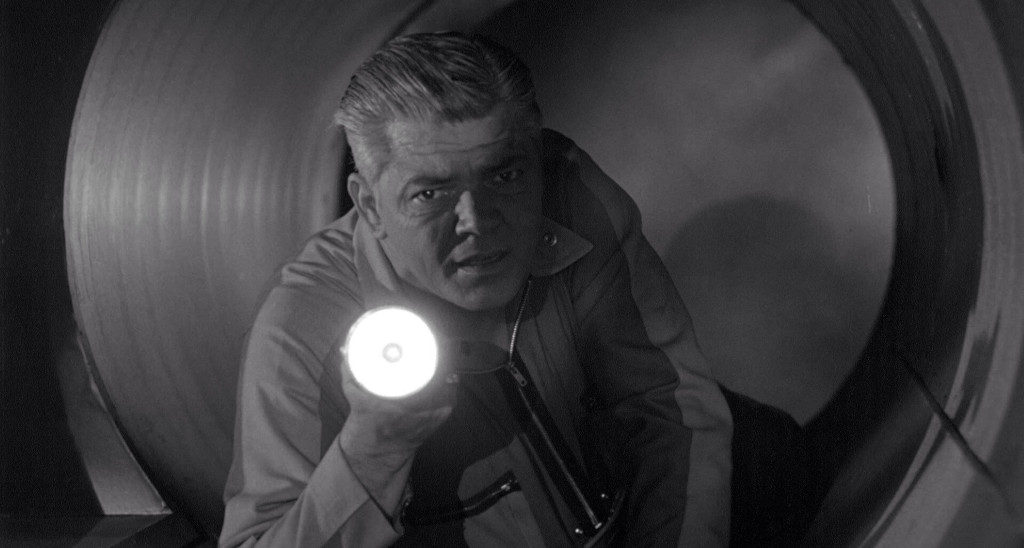
The bartender is played by Tom Kennedy, a staple bit-part player in comedies, who worked with artists like Laurel & Hardy and the Marx Brothers. Another prolific character and bit-part player was heavy-set Wade Crosby, playing the senator. Crosby also turned up in Red Planet Mars – another heavy-set propaganda piece, made in 1953, and the cult movie Westworld (1973).
Invasion U.S.A. is a fun rarity in the sense that it actually has two Lois Lanes in it. Noel Neill who played Lois in the 1948 film serial Superman (review), and would reprise the role in the George Reeves TV series with the same name, is badly underused as an airline worker. Phyllis Coates, who played Lois in Superman and the Mole-Men (1951, review) and played Lois in the first season of the afore-mentioned TV show plays a Mrs. Mulford – unfortunately they have no scenes together.
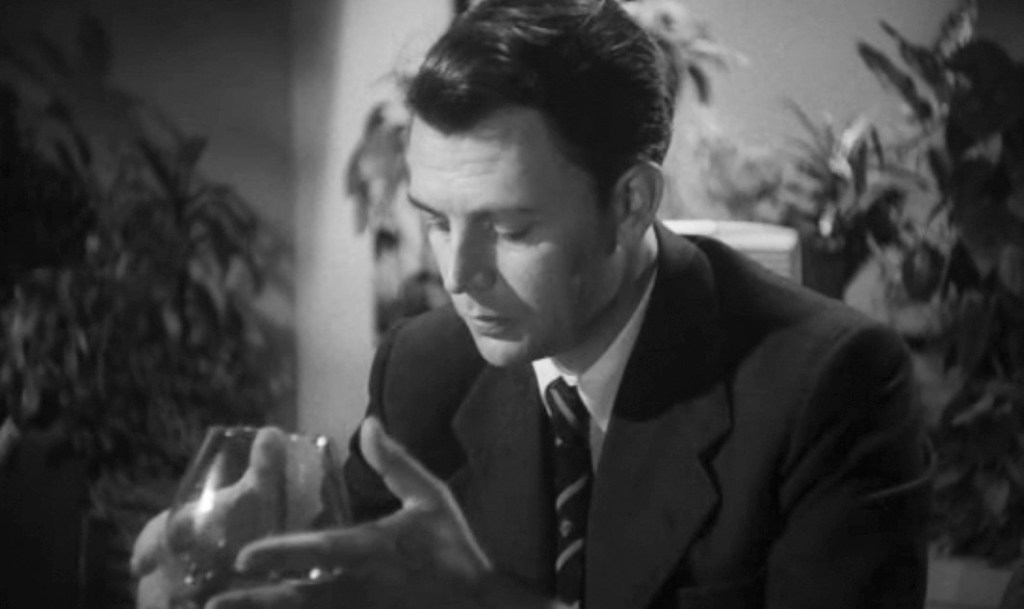
The star of the film, however only seen in the first and the last scenes of the movie, is Dan O’Herlihy as Ohman the ”forecaster”. O’Herlihy is wonderfully ominous and smug, adopting some kind of vague European accent. O’Herlihy’s big break seemed to have come in 1954, when he played Robinson Crusoe in Luis Bunuel’s adaptation of the book, but it never quite took off although he continued to stack up impressive work in both A and B films and numerous TV roles. He played the lead in the 1964 nuclear thriller Fail-Safe and portrayed president Roosevelt in the 1977 film MacArthur, starring Gregory Peck. He apperared as a guest star in the TV series The Bionic Woman (1977) and Battlestar Galactica (1978), and had roles in the films Halloween III: Season of the Witch (1982) as well as The Last Starfighter (1984). But it is two films that have made him instantly recognisable for a generation of movie-goers: Robocop (1987) and Robocop 2 (1990), in which he plays ”The Old Man”, or the president of Omni-Consumer Products.
Oh, yes, and watch out for ”Man from Omaha”, who is played by our old favourite, bit-part actor/extra legend Franklyn Farnum. Also among the extras of the film are William Hoehne Jr and William Schallert. Schallert is something of a sci-fi cult legend because of his involvement in numerous science fiction films and TV series. We have previously encountered him in one of his bigger roles, as the devious Dr. Mears in The Man from Planet X (1951, review), as well as in Captive Women. His long and industrious career on screen and off can be read about in detail in the reviews of said films.
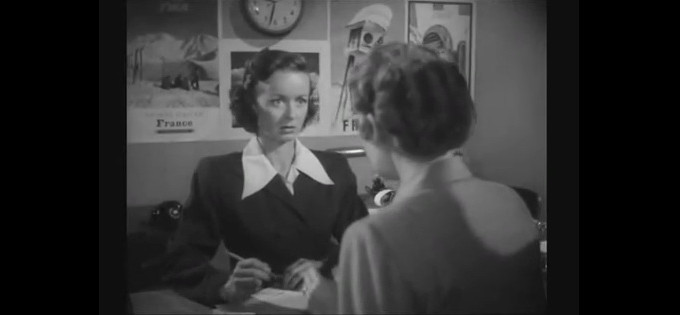
An attentive reader may find that there are many overlapping elements between Invasion, U.S.A. and Captive Women, which I reviewed here just a few weeks back. Several actors appear in both films, most notably Robert Bice and William Schallert, and Jack Rabin created the visual effects for both movies. Invasion, U.S.A. was produced by Albert Zugsmith for his own company APC, which he founded in 1952 along with writer-producers Aubrey Wisberg and Jack Pollexfen. The trio also produced Captive Women, although nominally APC was still called Albert Zugsmith Productions back then, and Zugsmith was credited as executive producer. However, Captive Women was distributed by RKO and Invasion, U.S.A. by Columbia.
For SF fans, Zugsmith is a character that cannot be ignored. Along with Wisberg and Pollexfen he also co-produced Port Sinister for APC/RKO in 1952. He had his greatest success between 1955 and 1958 at Universal, where he made such bona fide classics as Female on the Beach (1955), Written on the Wind (1956) and most notably Orson Welles’ Touch of Evil (1957). And during his stint at Universal he also produced the film that has made his name in SF circles, namely Jack Arnold’s The Incredible Shrinking Man (1957, review. In 1963 Zugsmith produced and directed The Great Space Adventure in the Philippines, which was never finished, and he had a cameo in The Thing with Two Heads (1972). In 1958 Zugsmith moved briefly to MGM, where he made a string of movies with bombshell Mamie Van Doren, which all lost money. He continued producing comedies with suggestive titles (Sex Kittens Go to College) at Allied Artists, some of them starring Van Doren, made a brief return to Universal, again teaming up with Van Doren for College Confidential (1960), produced and/or directed a couple of films in Berlin and in the Philippines with George Nader, and made a dozen films for his own company or collaborating with other independent producers on movies with titles like The Incredible Sex Revolution, Psychedelic Sexualis, Sappho Darling, The Very Friendly Neighbours and Violated!.
Janne Wass
Invasion, U.S.A. 1952, USA. Directed by Alfred E. Green. Written by Robert Smith & Franz Shulz. Starring: Gerald Mohr, Peggie Castle, Dan O’Herlihy, Robert Bice, Tom Kennedy, Wade Crosby, Erik Blythe, Phyllis Coates, Aram Katcher, Knox Manning, Edward G. Robinson Jr, Noel Neill, Clarence A. Shoop, Franklyn Farnum, William Hoehne Jr, William Schallert. Music. Albert Glasser. Cinematography: John L. Russell. Art direction: James W. Sullivan. Set decoration: John Sturtevant. Makeup: Harry Thomas. Production supervisor: Ralph E. Black. Sound: Frank McWhorter. Special effects: Roscoe Cline. Visual effects: Jack Rabin. Produced by Robert Smith & Albert Zugsmith for American Pictures Corporation & Columbia Pictures.

Leave a comment